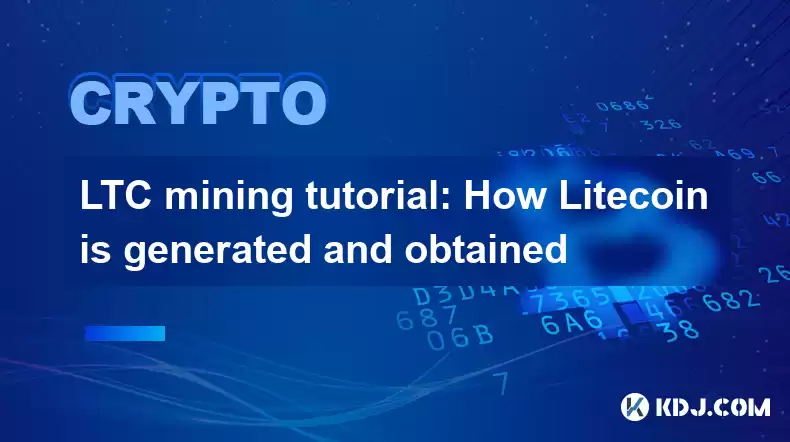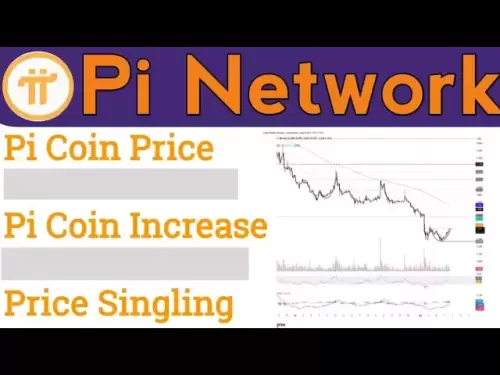-
 Bitcoin
Bitcoin $116900
0.00% -
 Ethereum
Ethereum $4280
5.48% -
 XRP
XRP $3.265
-1.45% -
 Tether USDt
Tether USDt $1.000
-0.01% -
 BNB
BNB $807.0
1.41% -
 Solana
Solana $183.1
2.93% -
 USDC
USDC $0.9999
0.00% -
 Dogecoin
Dogecoin $0.2440
6.50% -
 TRON
TRON $0.3357
-0.88% -
 Cardano
Cardano $0.8178
2.63% -
 Hyperliquid
Hyperliquid $44.13
7.45% -
 Chainlink
Chainlink $21.39
9.09% -
 Stellar
Stellar $0.4524
-0.84% -
 Sui
Sui $3.957
2.13% -
 Bitcoin Cash
Bitcoin Cash $572.7
-2.54% -
 Hedera
Hedera $0.2671
1.54% -
 Avalanche
Avalanche $24.77
4.17% -
 Ethena USDe
Ethena USDe $1.001
0.02% -
 Litecoin
Litecoin $122.3
-1.94% -
 Toncoin
Toncoin $3.432
2.26% -
 UNUS SED LEO
UNUS SED LEO $9.007
0.49% -
 Shiba Inu
Shiba Inu $0.00001396
5.26% -
 Uniswap
Uniswap $11.09
1.64% -
 Polkadot
Polkadot $4.155
4.57% -
 Dai
Dai $1.000
0.00% -
 Pepe
Pepe $0.00001253
5.11% -
 Cronos
Cronos $0.1588
2.67% -
 Bitget Token
Bitget Token $4.512
0.05% -
 Monero
Monero $275.0
0.64% -
 Ethena
Ethena $0.7527
15.10%
LTC mining tutorial: How Litecoin is generated and obtained
Litecoin mining, a lucrative endeavor, involves solving mathematical puzzles using specialized hardware to validate transactions and generate new LTC tokens, rewarding miners with both coins and transaction fees.
Feb 06, 2025 at 02:30 pm

Key Points:
- Overview of Litecoin Mining
- Essential Hardware for Litecoin Mining
- Setting Up a Litecoin Mining Rig
- Joining a Litecoin Mining Pool
- Configuring Your Mining Software
- Monitoring and Maintaining Your Mining Rig
- Troubleshooting Common Mining Issues
LTC Mining Tutorial: How Litecoin is Generated and Obtained
Litecoin (LTC), a prominent cryptocurrency and a silver to Bitcoin's gold, presents numerous opportunities for investors and miners alike. Understanding the process of Litecoin mining can pave the way for active participation in the cryptocurrency ecosystem and potential financial gains. Here's a step-by-step guide to help you delve into the world of LTC mining:
1. Overview of Litecoin Mining
Litecoin mining involves solving complex mathematical puzzles using specialized computer hardware to validate transactions and create new LTC tokens. Miners are rewarded for their contributions to the network with newly mined coins and transaction fees. Litecoin's proof-of-work consensus algorithm ensures the security and immutability of the blockchain.
2. Essential Hardware for Litecoin Mining
The heart of Litecoin mining lies in specialized hardware commonly referred to as mining rigs. These rigs comprise powerful graphics cards (GPUs) or application-specific integrated circuits (ASICs) optimized for the Scrypt hashing algorithm used by Litecoin. Choosing the right hardware with high hash rates and energy efficiency is crucial for profitable mining.
3. Setting Up a Litecoin Mining Rig
Once you have acquired the necessary hardware, it's time to set up your mining rig. This includes assembling the components, connecting them properly, and ensuring adequate cooling to prevent overheating issues. Configuring the hardware settings for maximum performance and efficiency is also essential.
4. Joining a Litecoin Mining Pool
Solo mining, where miners work independently to solve blocks, is generally not recommended due to the low probability of success. Joining a mining pool combines your resources with others, increasing your chances of finding blocks and earning rewards. Selecting a reputable mining pool with a stable network and low fees is vital.
5. Configuring Your Mining Software
To connect your mining rig to the mining pool and initiate the mining process, you need specialized mining software. Choose software compatible with your hardware and the mining pool you have joined. Configuring the software settings, such as the pool URL, username, and password, is necessary to establish a connection.
6. Monitoring and Maintaining Your Mining Rig
Once your mining rig is up and running, regular monitoring is crucial to ensure optimal performance. Use monitoring tools to track important metrics like hash rate, temperature, and power consumption. Consistent maintenance, including dust removal and hardware upgrades, is essential to prolong the lifespan of your rig and maintain profitability.
7. Troubleshooting Common Mining Issues
Mining issues can arise due to various reasons. Troubleshooting involves identifying the root cause and implementing appropriate solutions. Common issues include hardware malfunctions, software bugs, network connectivity problems, or pool server issues. Consulting online forums or reaching out to the mining pool's support team can provide guidance in resolving these issues.
Frequently Asked Questions (FAQs):
1. What is the minimum hardware requirement for Litecoin mining?
The minimum hardware requirement for Litecoin mining is a computer with a graphics card with a hash rate of at least 300 MH/s. However, for profitability, it is recommended to use more advanced mining hardware such as ASIC miners.
2. How much does it cost to start Litecoin mining?
The cost of starting Litecoin mining varies depending on the hardware you choose. A basic mining rig with a GPU can cost around $500-$1000, while an ASIC miner can cost more than $5000. Additional costs include electricity and maintenance.
3. Is Litecoin mining profitable?
The profitability of Litecoin mining depends on factors such as the difficulty of the network, the price of Litecoin, and your electricity costs. It is essential to carefully calculate your potential earnings and expenses before investing in mining equipment.
4. What are the risks involved in Litecoin mining?
Litecoin mining involves financial risks due to the fluctuating prices of cryptocurrencies and the potential for hardware issues or pool malfunctions. Additionally, mining can be competitive, and it is possible that you may not earn any rewards despite investing in hardware and electricity.
5. How long does it take to mine one Litecoin?
The time it takes to mine one Litecoin depends on the hash rate of your mining hardware, the difficulty of the network, and whether you are mining solo or in a pool. With a hash rate of 500 MH/s, it can take around 10-12 days to mine one Litecoin.
Disclaimer:info@kdj.com
The information provided is not trading advice. kdj.com does not assume any responsibility for any investments made based on the information provided in this article. Cryptocurrencies are highly volatile and it is highly recommended that you invest with caution after thorough research!
If you believe that the content used on this website infringes your copyright, please contact us immediately (info@kdj.com) and we will delete it promptly.
- Crypto Gains, Strategy, and Millions: Decoding the Hottest Trends
- 2025-08-10 14:30:12
- Coinbase Dives into DEX Trading: A New Era for US Crypto Users (Except You, New York!)
- 2025-08-10 14:30:12
- Cold Wallet's Presale: A High ROI Haven in the Crypto Storm
- 2025-08-10 12:50:11
- Meme Coins in 2025: Analyst Accumulation and the Hunt for the Next Moonshot
- 2025-08-10 13:10:11
- Meme Coins in 2025: Early Access to the Moon with $MOBU
- 2025-08-10 12:30:11
- Bitcoin's Golden Cross: Rally Outlook and What's Next
- 2025-08-10 12:30:11
Related knowledge

What is Ethereum’s Slashing mechanism and how to punish malicious behavior?
Feb 20,2025 at 03:08am
Key PointsOverview of slashingDifferent types of slashing in EthereumIncentives and consequences of slashingIdentifying and reporting slashed validato...

What is the verifier node of Ethereum and how to become a verifier?
Feb 19,2025 at 06:00pm
The Verifier Node of Ethereum: A Comprehensive GuideKey Points:What is a Verifier Node?How to Become a Verifier NodeResponsibilities and Rewards of a ...

What is Ethereum’s staking, and how to participate and earn money?
Feb 19,2025 at 04:37pm
Key Points:Understanding Ethereum's Staking MechanismSteps to Participate in StakingBenefits and Rewards of StakingSecurity and Risk ConsiderationsTec...

What is Ethereum’s DAO (Decentralized Autonomous Organization) and how does it work?
Feb 20,2025 at 03:12am
Key PointsDefinition and Structure of a DAOGovernance and Decision-Making in DAOsBenefits and Use Cases of DAOsChallenges and Limitations of DAOsWhat ...

What is Ethereum's multi-signature wallet and how to improve security?
Feb 20,2025 at 02:18pm
Key Points:Understanding the Concept of a Multi-Signature WalletBenefits and Drawbacks of Multisig WalletsRequirements for Setting Up a Multisig Walle...

What is Ethereum's oracle and how to provide data for smart contracts?
Feb 21,2025 at 01:30am
Key Points:Understanding the concept of oracles in EthereumExploring different types of oraclesDetailed guide on how to provide data for smart contrac...

What is Ethereum’s Slashing mechanism and how to punish malicious behavior?
Feb 20,2025 at 03:08am
Key PointsOverview of slashingDifferent types of slashing in EthereumIncentives and consequences of slashingIdentifying and reporting slashed validato...

What is the verifier node of Ethereum and how to become a verifier?
Feb 19,2025 at 06:00pm
The Verifier Node of Ethereum: A Comprehensive GuideKey Points:What is a Verifier Node?How to Become a Verifier NodeResponsibilities and Rewards of a ...

What is Ethereum’s staking, and how to participate and earn money?
Feb 19,2025 at 04:37pm
Key Points:Understanding Ethereum's Staking MechanismSteps to Participate in StakingBenefits and Rewards of StakingSecurity and Risk ConsiderationsTec...

What is Ethereum’s DAO (Decentralized Autonomous Organization) and how does it work?
Feb 20,2025 at 03:12am
Key PointsDefinition and Structure of a DAOGovernance and Decision-Making in DAOsBenefits and Use Cases of DAOsChallenges and Limitations of DAOsWhat ...

What is Ethereum's multi-signature wallet and how to improve security?
Feb 20,2025 at 02:18pm
Key Points:Understanding the Concept of a Multi-Signature WalletBenefits and Drawbacks of Multisig WalletsRequirements for Setting Up a Multisig Walle...

What is Ethereum's oracle and how to provide data for smart contracts?
Feb 21,2025 at 01:30am
Key Points:Understanding the concept of oracles in EthereumExploring different types of oraclesDetailed guide on how to provide data for smart contrac...
See all articles

























































































